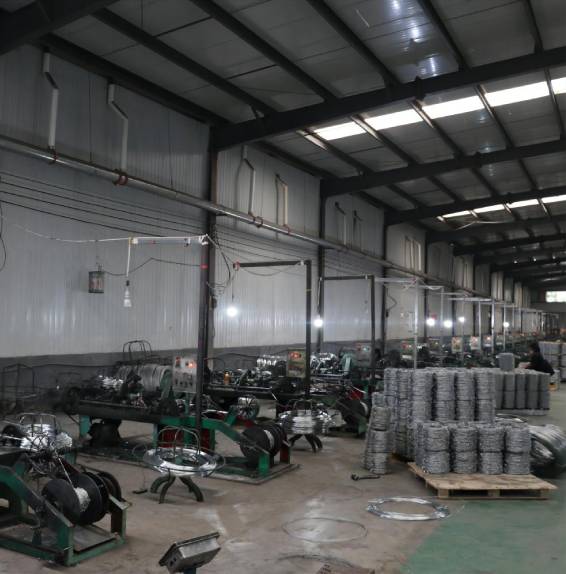Choosing the Right Iron Wire Size for Your Needs and Projects
Understanding Iron Wire Sizes A Comprehensive Guide
Iron wire has been a staple material in various industries for centuries, serving as a foundational component in construction, manufacturing, and craftwork. With its strength, durability, and versatility, iron wire comes in various sizes and specifications, making it crucial for both professionals and DIY enthusiasts to understand wire sizing for optimal performance and safety. This article will delve into the importance of iron wire sizes, common standards, and how to select the right size for your specific needs.
The Significance of Wire Size
The size of iron wire is not just a matter of preference; it directly impacts the wire's strength, flexibility, and suitability for specific applications. A larger diameter wire typically offers increased tensile strength, making it ideal for heavy-duty applications such as fencing, structural reinforcements, and load-bearing supports. Conversely, smaller diameter wires are often used for finer work, such as crafting, jewelry making, and detailed construction projects.
Common Standards and Measurements
Iron wire sizes are commonly measured in gauge (AWG - American Wire Gauge) or in millimeters (mm) depending on the region and industry. The AWG system is predominantly used in North America, where a higher gauge number indicates a thinner wire. For instance, a 16-gauge wire is thicker than a 20-gauge wire. In contrast, millimeter measurements are widely used in Europe and other parts of the world, providing a direct measurement of the wire's diameter.
For example, a common size for iron wire in construction might range from 1.0 mm to 5.0 mm in diameter, with each size serving different purposes. A 1.0 mm wire might be suitable for light tasks, while a 4.0 mm wire could be necessary for more robust applications.
Choosing the Right Wire Size
iron wire size

Selecting the appropriate wire size depends on numerous factors, including the project's requirements, the environment in which the wire will be used, and the load it needs to bear. Here are some crucial considerations when choosing the right iron wire size
1. Application Consider what the wire will be used for. For fencing, heavier gauge wire (around 12-14 AWG) is usually preferred, while for electrical applications, thinner wire may suffice.
2. Load Requirements Assess the maximum load the wire will need to support. If the wire is intended to support significant weight, opting for a thicker diameter is advisable.
3. Flexibility vs. Strength Thicker wires are generally less flexible but offer greater strength. If your project requires bending or conforming to a shape, a thinner wire might be more suitable.
4. Environmental Conditions Factors such as moisture, temperature, and exposure to chemicals can affect the performance of iron wire. In corrosive environments, consider using galvanized or coated wire to enhance longevity.
5. Local Standards Familiarize yourself with local building codes and standards, as they may dictate minimum sizes and specifications for certain applications.
Conclusion
Understanding the dimensions and specifications of iron wire is essential for achieving the best results in both professional and personal projects. By considering the application, load requirements, and environmental factors, you can make informed decisions about wire size and type. Remember that while a thicker wire may offer more strength, it may not always be the best choice for every application. Equipped with this knowledge, you can confidently select the right iron wire size for your needs, ensuring the safety and efficacy of your projects. Whether you are engaging in construction, crafting, or any form of manufacturing, the right wire size can make all the difference in achieving your desired outcomes.
-
Space-Saving Chain Fence Hacks Vertical Gardening with Cyclone MeshNewsJul.16,2025
-
Innovations in Iron Nail Wire Production for Modern ConstructionNewsJul.16,2025
-
Creative Uses of Wire Netting Fence in Modern Landscape DesignNewsJul.16,2025
-
Barbed Wire Fence Innovations in Anti-Climb TechnologyNewsJul.16,2025
-
Architectural Uses of Umbrella Nails for Aesthetic Roof DesignsNewsJul.16,2025
-
Architectural Uses of Razor Barbed Wire in Secure Urban DesignNewsJul.16,2025




